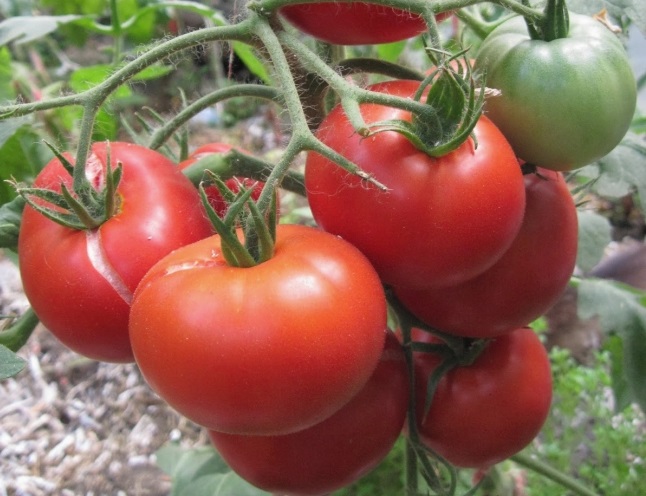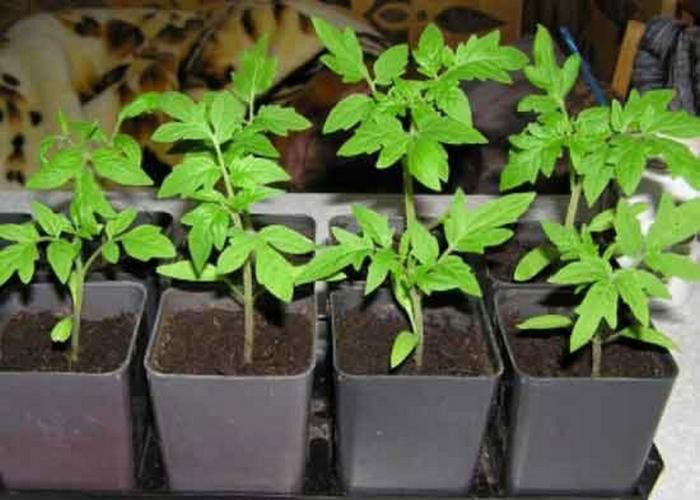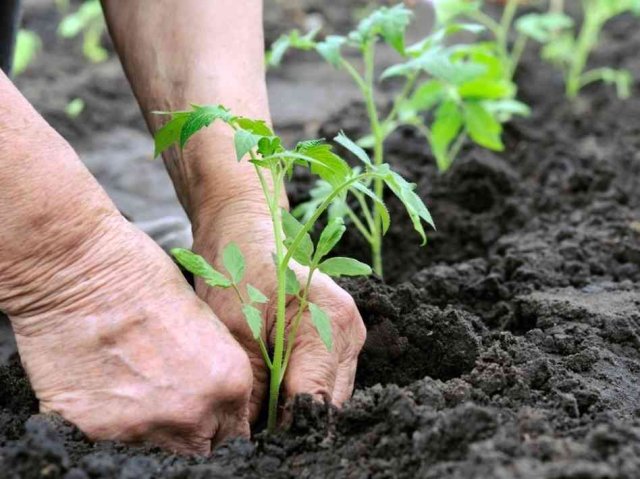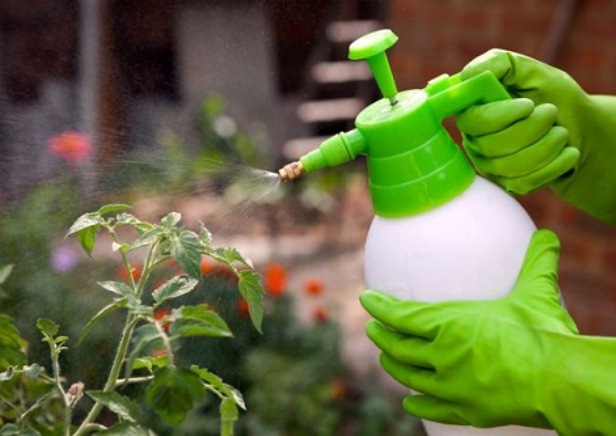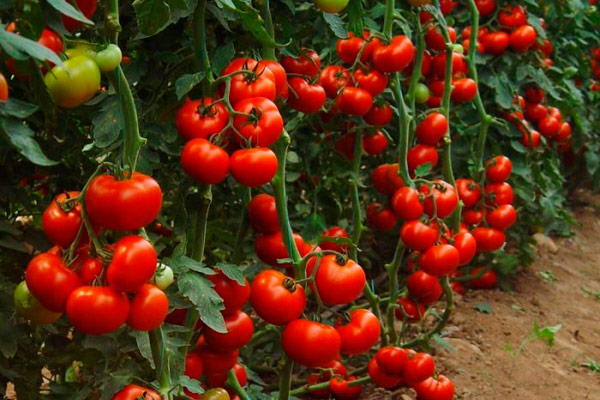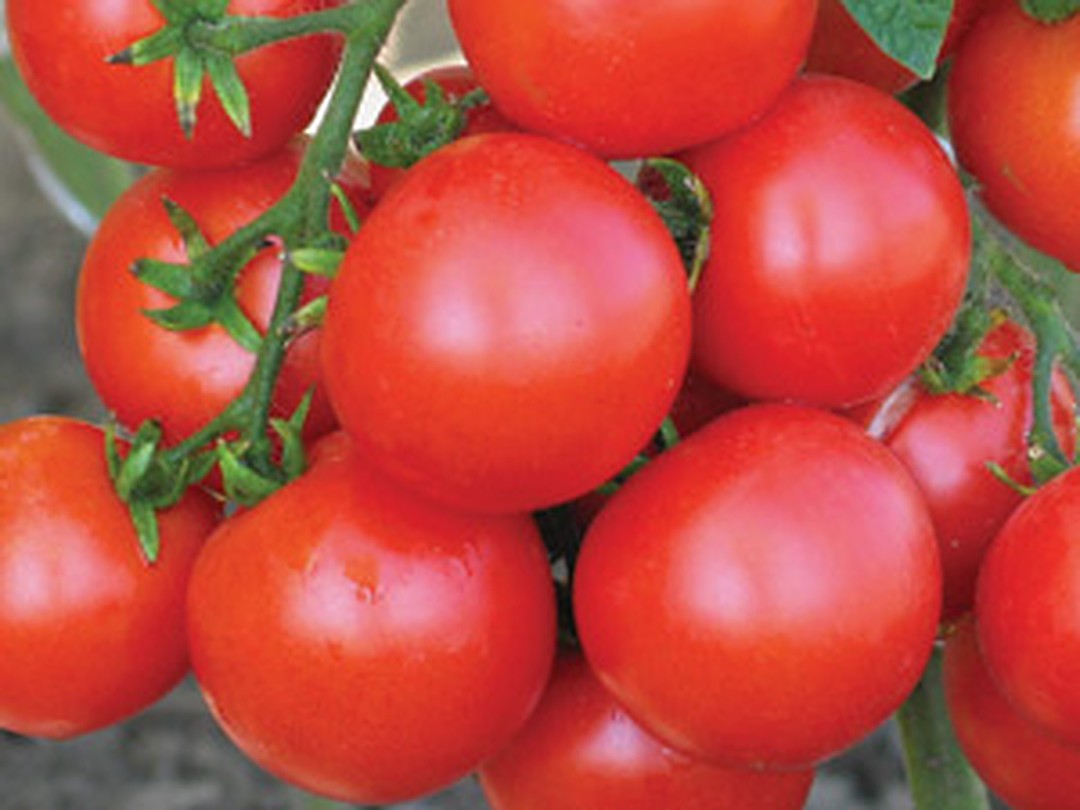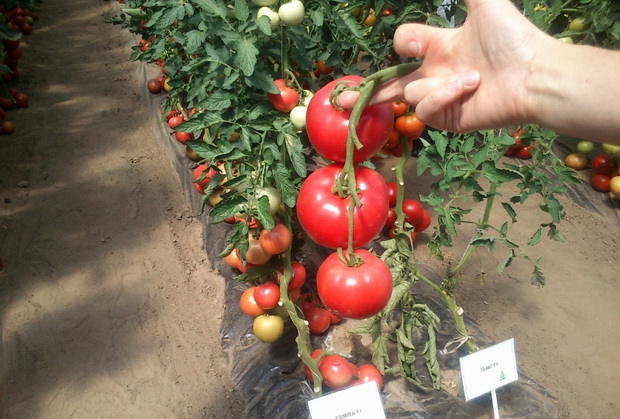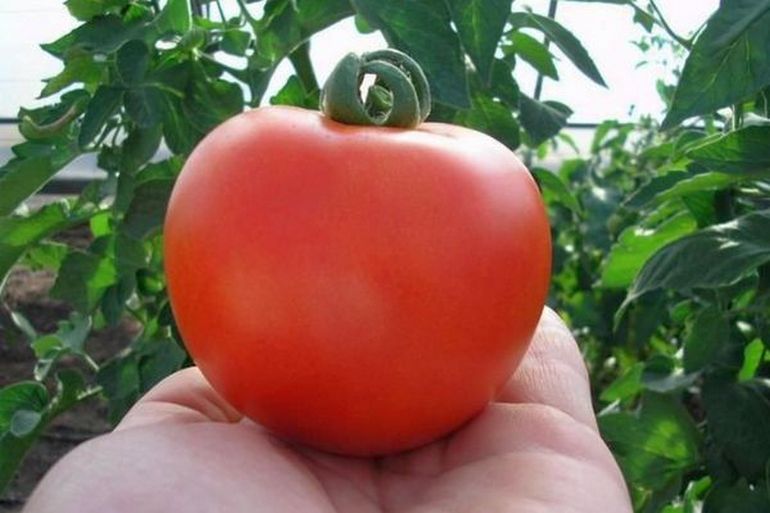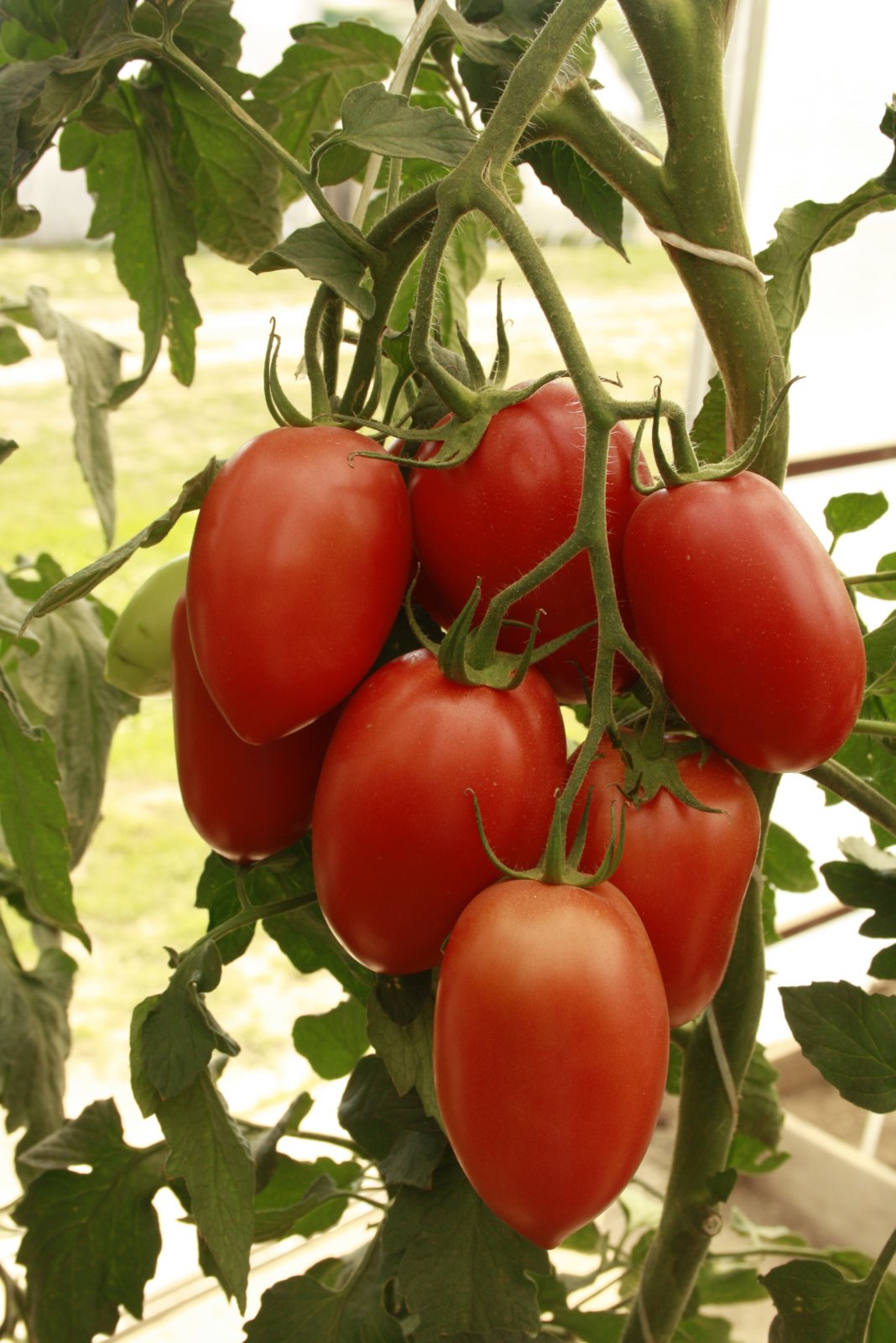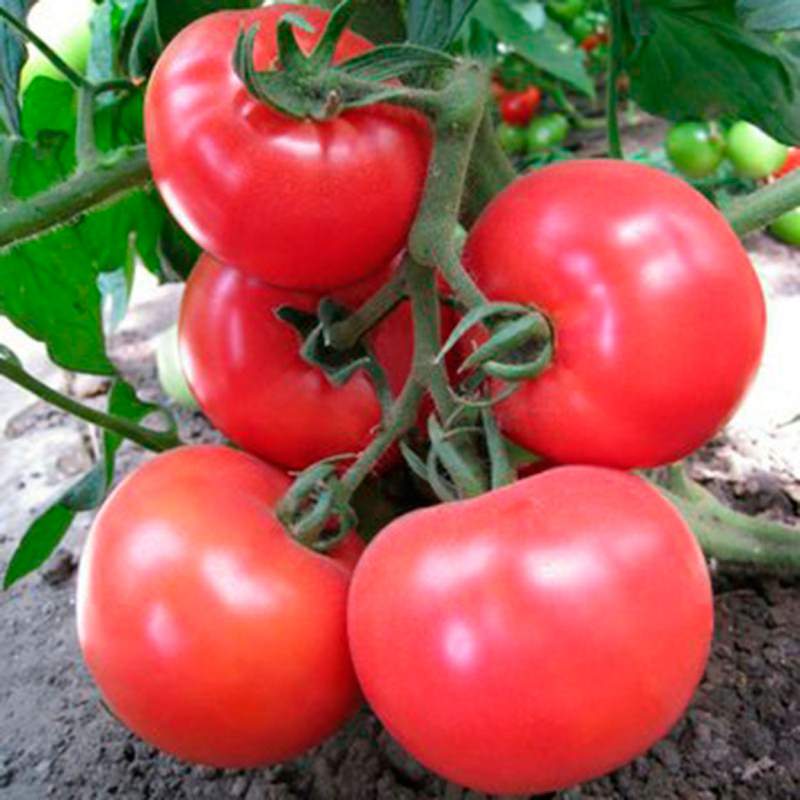Content:
Tomatoes, which came to us from Ecuador and Peru, belong to annuals from the Solanaceae family. Differ:
- color and shape of berries;
- fruit weight;
- ripening terms;
- taste.
Most summer residents prefer early-ripening tomato varieties, especially in the northern regions. Among them are Agata tomatoes. The tomato was bred by breeders in 1987.
Description
Determinant plants include Agata tomato. Forms up to 5 brushes, on which from 3 to 6 fruits ripen. The berries weigh in the range from 80 to 110 g. Under the mass of fruits, the undersized bush tends to the ground and may break. The contact of tomatoes with the soil threatens to rot. Supports are required to cope with the problem. The Agatha garter promotes plant illumination and airflow, and also reduces the risk of late blight.
The skin of tomatoes is smooth, glossy, red. The shape is round and slightly flattened. The dense skin prevents the tomatoes from cracking during transportation and cooking.
The distinctive features of Agatha include:
- The compactness of the tomato. Plant height ranges from 35 to 45 cm;
- High yield. Remove up to 4 kg from 1 bush;
- Early maturation. The growing season is 95 to 110 days;
- Non-hybrid view. Makes it possible to safely collect seeds and sow them for the next year;
- Average susceptibility to disease;
- Taste qualities. Lack of acid, rich aroma;
- Storage and transportation. Ideal for growing for sale.
Tomato Pink agate does not require pinching and bush formation. Tomato propagation methods: seed and seedling. The first option is preferable in the southern regions - earlier warming of the soil and the low probability of return frosts. Agatha is cultivated in open and protected ground.
Agricultural technology of cultivation
Growing seedlings
Sowing seeds of Agatha is carried out in the second decade of March. First, they are heated in an oven for 3 hours at a temperature of 60 ° C. A slightly pink solution of potassium permanganate is used for disinfection. The seed is soaked for 20 minutes. Then they are placed in a growth stimulator: Ideal or Epin. Sometimes the biostimulant is replaced with a mixture of trace elements. The seeds are placed in moistened sand. The optimum temperature for germination of Agate is + 23 ... + 25 ° С. The hardening of the planting material is carried out on the lower shelf of the refrigerator at a temperature of + 3 ... + 5 ° С for three days. The temperature difference does not threaten tomato seeds.
Sow in a container with prepared soil, which consists of turf, sand and humus in a ratio of 1: 0.5: 1. The height of the box is at least 10 cm. The planting material is deepened by 0.5 cm. Irrigated with water, covered with polyethylene or glass. Agatha is placed in a warm room with an air temperature of +25 ° C. Seed germination is expected after 7 days.
Numerous shoots - a signal to open the container and place it in a bright place. Lower the temperature for a while to + 16 ° C.
Lack of light negatively affects tomatoes - seedlings stretch and weaken. Lighting of seedlings is required for at least half a day. Watering is carried out after the formation of the first leaf with water at room temperature.
The frequency of watering depends on the appearance of the leaves: at first - once every 7 days, when forming 5 leaves - once every 3 days.
Diving into individual cassettes is carried out in the presence of 2 true sheets. Peat pots and 0.5 l plastic glasses are suitable for Agatha. The breaking off of the root end causes the development of a strong root system.
If the seedlings are purchased
When buying Agatha seedlings at the market, gardeners should carefully examine the seedlings. Unscrupulous sellers are forcing plants on manure. Distinctive features of seedlings:
- juiciness;
- height;
- deep green color.
Description of tomatoes Agate will help you get high quality hardened seedlings with dark purple stems.
Site and landing requirements
Choose a lighted area with loose fertile drained soil, which is prepared in the fall. Dig up and fertilize. In the spring they plow again. FROMsqueeze Agatha after:
- carrots;
- Luke;
- legumes;
- cabbage.
Humus and superphosphate (1 tbsp) are added to the dug holes. Follow the scheme for planting tomatoes:
- distance between seedlings - 40 cm;
- the spacing in the row spacing is 50 cm.
Care
They take care of Agatha, using fertilizing and watering, loosening and weeding, pest control.
Fertilizer
Agatha is fed 2-3 times per season. Mineral or organic fertilizers are applied. Feeding with liquid chicken manure is carried out in a ratio of 1:20 or manure 1:12.
Watering
Disease prevention
To strengthen the immunity of tomatoes and prevent disease, folk remedies are used. Spray Agatha:
- tincture of garlic with manganese (100 g of chopped garlic heads, arrows or leaves are poured with 250 ml of water, infused for 24 hours, then filtered and added to 10 liters of water, coupled with 1 g of potassium permanganate);
- milk whey (diluted with water in equal parts);
- milk with iodine (20 drops of iodine and 1 liter of skim milk are required for a bucket of liquid).
Dust tomatoes with ash and tobacco dust. A reliable preventive measure against late blight is Bordeaux mixture. The processing of crops is carried out 14 days after planting Agatha on the beds. For cooking, you will need 10 liters of water, in which slaked lime and copper sulfate are dissolved in equal amounts - 50 g each.
Competent care is a guarantee of a good yield of a low-growing tomato.
Advantages and disadvantages of the variety
An overview of the positive and negative sides of Agatha will complement the detailed description of the variety.
Pros of tomatoes:
- amicable ripening of berries of the same size;
- the possibility of zoning in cold regions in a greenhouse;
- versatility of fruits;
- excellent marketable appearance;
- harvesting with minimal stress.
Cons of Agatha:
- susceptibility to late blight;
- a weak stem requires a garter to a support to prevent fruit from rotting in the lower tier.
Description and characteristics of the Agata tomato variety will help novice vegetable growers to cultivate tomatoes and enjoy the fragrant fruits.
